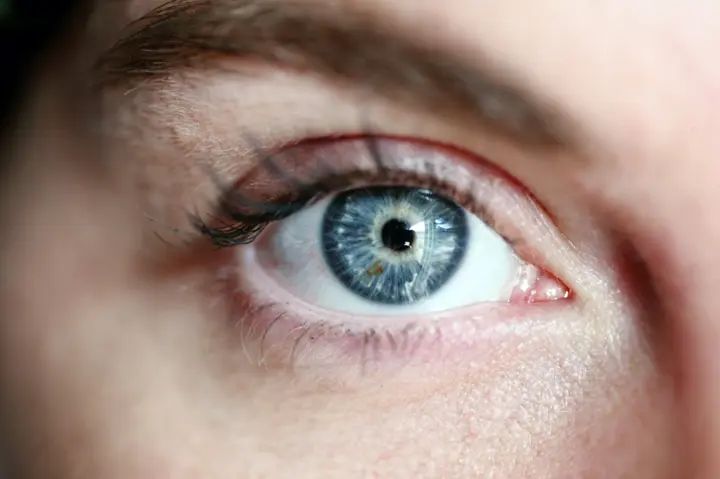Eye discoloration surgeries are no small feat – they can leave you blind
There seems to be no limit to the things people are willing to do in order to achieve the perfect look. Whether it's injecting fat into their buttocks, extracting their teeth and preparing them with implants and artificial teeth, or removing strips of skin from their heads and reinserting them to treat baldness. Or injecting materials (muscle shawl) to get rid of skin wrinkles (Botox) or injecting materials to enlarge the lips or cheeks (filler) or surgeries performed on the chin and jaw to change the contour of the face and no matter how dangerous such cosmetic procedures are, there are always people willing to pay the price. Some people now undergo procedures to permanently change their eye color. This can be done in a variety of ways – such as implants to change the appearance of the iris, iris tattoos or laser dye removal. While these procedures may give people the look they desire, they can also cause a whole host of risks and complications – one of which is blindness.
Recommend
Show key points
- Many people are willing to undergo extreme and dangerous cosmetic procedures to achieve their desired physical appearance.
- Permanent iris color change surgeries, such as implants, tattoos, and laser treatments, are growing in popularity but carry significant health risks.
- These procedures, originally developed for medical reasons, now raise ethical and safety concerns when used for purely aesthetic purposes.
- ADVERTISEMENT
- The iris plays a crucial role in regulating light entering the eye and protecting it, making it especially vulnerable to harmful interventions.
- Techniques like corneal pigmentation and laser depigmentation can lead to severe complications, including vision changes and even complete blindness.
- Silicone iris implants have caused serious and irreversible damage for some individuals, such as extreme vision loss and optic nerve damage.
- Despite their risks, these eye color change methods lack sufficient long-term research and are not medically recommended, unlike safe alternatives like colored contact lenses.
Iris

The iris is the colored ring that surrounds the pupil. They are just as complex as they are beautiful. It consists of two layers of smooth muscle (which we cannot control). These muscles are responsible for shrinking and expanding the size of the pupil and iris in order to control the amount of light entering the eye. These muscles also protect sensitive receptor cells inside the eye from permanent damage. The iris also has two pigment layers that contain melanin that determines the color of your eyes. There are six main colors recognized: brown, amber, hazelnut, green, blue, and gray. If you have a lot of pigment in both layers, your eyes will be a darker color – like brown, the most common eye color (found in about 80% of the world's population). If you have less pigment in the front layer, your eyes will be two guns or green (the rarest colors, found in only 2% of the population). Those with little or no melanin in the frontal layer will have blue or gray eyes.
Fixing or creating the problem?

Eye surgeries, especially the iris, are nothing new. Eye operations for cataracts date back to the fifth century BC, and coloring scars in the eye have been around for more than 2,000 years. Until recent years, surgeries were performed to reconstruct the iris or repair a defect. But cosmetic procedures to permanently change the color of the iris are now beginning to become more common. Corneal pigmentation is an example of one such procedure. A series of small incisions are made with a needle in the cornea (transparent protective layer of the eyeball). Tints are inserted into the layer to change them permanently. The technique dates back thousands of years, and a variety of pigments, including soot, have been tested. Similarly, using a laser to remove pigment from the outer layer of the iris can change the color of brown eyes to light blue or gray. Pigment removal procedures do this by burning the pigment and the cells that make the pigment with a laser.
This technique can only be used to go from dark to light eyes and will not work for people who want to go the other way (from light to dark) because it is currently not possible to add or deposit more melanin in the iris if it is already absent, or there is not much of it.
Types of procedures

Depigmentation was originally developed to treat ocular cutaneous melanosis, a condition in which melanocytes do not migrate to where they need to be, causing other parts of the eye (such as the whites of the eye) to darken. This condition may require a number of treatment rounds but is usually permanent, as is the case with cosmetic change. Both laser depigmentation and corneal pigmentation involve a high risk of sepsis because it compromises the outer layers of the eye. These procedures can also cause light sensitivity and vision changes – including blindness, corneal thinning and perforation, glaucoma, and cataracts. Some patients who have undergone depigmentation procedures have even complained of eye pain during MRI procedures. Another procedure that some people use to change the color of their eyes is to insert silicone implants into their eyes. One Instagram model who underwent the procedure suffered major complications that left her with the eyesight of a 90-year-old woman – losing 50% of vision in one eye and 80% in the other. Others have reported similar complications. These implants bring a high risk of sepsis and other complications – such as a change in the shape of the eye where the fluid inside the eye exerts pressure on the optic nerve. Because this nerve controls vision, blindness occurs if it is compressed. There is not enough evidence to support the use of any of these cosmetic procedures. As with many things done for cosmetic reasons, short-term gain leaves you vulnerable to potential long-term pain. Even when these procedures are used to treat medical conditions, complications occur in some cases. If you're considering undergoing one of these procedures, ask yourself if it's worth going blind just because you don't like the color of your eyes. One safe way to change your eye color is to use the prescribed colored contact lenses instead.








